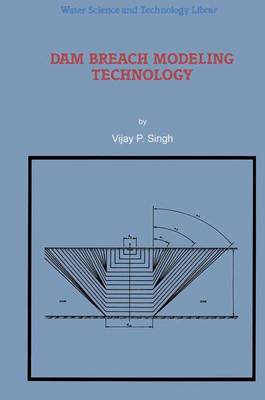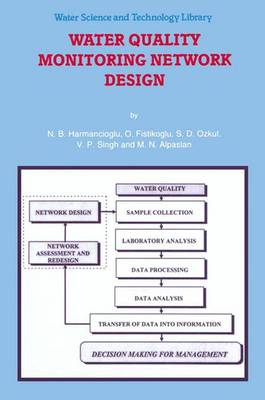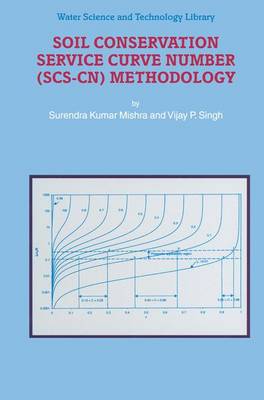Water Science and Technology Library
4 primary works
Book 17
Dams are constructed for economic development, and their construction involves large investments of money, and natural and human resources. Of the various types of dams constructed around the globe, earth dams are the most common type and constitute the vast majority of dams. When adam fails, it culminates in the sudden release of artificially stored water which, in turn, becomes a potential menace to virtually everything downstream. The dam failure may result in loss of life and property. In recent years, instances of dam failure in the world have been too many, and the resulting loss too high. As a result, dam safety pro grams have been developed in most countries of the world since the beginning of the nineteenth eighties. · Earth dams are more susceptible to failure than other types. The cause of failure is often either overtopping or piping. The modeling of dam breaching due to either or both of these causes is of fundamental importance to development of dam-safety programs. This book is, therefore, an attempt to present some aspects of earth-dam breach modeling technology. It is hoped that others will be stimulated to write more comprehensive texts on this subject of growing interest and importance. The book is divided into eight chapters. The first chapter is introductory and discusses some aspects of dams and dam failures in the world.
Book 30
Since the pioneering work of Shannon in the late 1940's on the development of the theory of entropy and the landmark contributions of Jaynes a decade later leading to the development of the principle of maximum entropy (POME), the concept of entropy has been increasingly applied in a wide spectrum of areas, including chemistry, electronics and communications engineering, data acquisition and storage and retreival, data monitoring network design, ecology, economics, environmental engineering, earth sciences, fluid mechanics, genetics, geology, geomorphology, geophysics, geotechnical engineering, hydraulics, hydrology, image processing, management sciences, operations research, pattern recognition and identification, photogrammetry, psychology, physics and quantum mechanics, reliability analysis, reservoir engineering, statistical mechanics, thermodynamics, topology, transportation engineering, turbulence modeling, and so on. New areas finding application of entropy have since continued to unfold. The entropy concept is indeed versatile and its applicability widespread. In the area of hydrology and water resources, a range of applications of entropy have been reported during the past three decades or so. This book focuses on parameter estimation using entropy for a number of distributions frequently used in hydrology. In the entropy-based parameter estimation the distribution parameters are expressed in terms of the given information, called constraints. Thus, the method lends itself to a physical interpretation of the parameters. Because the information to be specified usually constitutes sufficient statistics for the distribution under consideration, the entropy method provides a quantitative way to express the information contained in the distribution.
Book 33
Water Quality Monitoring Network Design
by Nilgun B. Harmanciogammalu, O. Fistikoglu, S.D. Ozkul, V P Singh, and M.N. Alpaslan
Published 31 December 1998
In recent years, the adequacy of collected water quality data and the performance of existing monitoring networks have been seriously evaluated for two basic reasons. First, an efficient information system is required to satisfy the needs of water quality management plans and to aid in the decision-making process. Second, this system has to be realized under the constraints of limited financial resources, sampling and analysis facilities, and manpower. Problems observed in available data and shortcomings of current networks have led researchers to focus more critically on the design procedures used.
The book is intended to present an up-to-date overview of the current network design procedures and develop basic guidelines to be followed in both the design and the redesign of water quality monitoring networks. The book treats the network design problem in a comprehensive and systematic framework, starting with objectives of monitoring and elaborating on various technical design features, e.g. selection of sampling sites, sampling frequencies, variables to be monitored, and sampling duration. The design procedures presented are those that the authors have recently applied in a number of national and international projects on the design and redesign of water quality monitoring networks. Thus, the book covers real case studies where not only the methods described in the earlier titles are used but also new techniques are introduced. Where earlier methods are used, they are assessed with respect to their efficiency and applicability to real case problems.
Audience: Essentially, the framework adopted in the book applies as well to other hydrometric data collection networks besides those of water quality. In this respect, it is expected that planners, designers, scientists, and engineers who are involved in hydrometric network design will benefit from the in-depth approach assumed in this book. It will also be of interest to research and data centers, international programs and organizations related to environmental monitoring. The book may also be used as a reference text in graduate courses of water resources and environmental engineering programs.
The book is intended to present an up-to-date overview of the current network design procedures and develop basic guidelines to be followed in both the design and the redesign of water quality monitoring networks. The book treats the network design problem in a comprehensive and systematic framework, starting with objectives of monitoring and elaborating on various technical design features, e.g. selection of sampling sites, sampling frequencies, variables to be monitored, and sampling duration. The design procedures presented are those that the authors have recently applied in a number of national and international projects on the design and redesign of water quality monitoring networks. Thus, the book covers real case studies where not only the methods described in the earlier titles are used but also new techniques are introduced. Where earlier methods are used, they are assessed with respect to their efficiency and applicability to real case problems.
Audience: Essentially, the framework adopted in the book applies as well to other hydrometric data collection networks besides those of water quality. In this respect, it is expected that planners, designers, scientists, and engineers who are involved in hydrometric network design will benefit from the in-depth approach assumed in this book. It will also be of interest to research and data centers, international programs and organizations related to environmental monitoring. The book may also be used as a reference text in graduate courses of water resources and environmental engineering programs.
Book 42
Soil Conservation Service Curve Number (SCS-CN) Methodology
by Sk Mishra and V P Singh
Published 28 February 2003
The Soil Conservation Service (SCS) curve number (CN) method is one of the most popular methods for computing the runoff volume from a rainstorm. It is popular because it is simple, easy to understand and apply, and stable, and accounts for most of the runoff producing watershed characteristics, such as soil type, land use, hydrologic condition, and antecedent moisture condition. The SCS-CN method was originally developed for its use on small agricultural watersheds and has since been extended and applied to rural, forest and urban watersheds. Since the inception of the method, it has been applied to a wide range of environments. In recent years, the method has received much attention in the hydrologic literature. The SCS-CN method was first published in 1956 in Section-4 of the National Engineering Handbook of Soil Conservation Service (now called the Natural Resources Conservation Service), U. S. Department of Agriculture. The publication has since been revised several times. However, the contents of the methodology have been nonetheless more or less the same. Being an agency methodology, the method has not passed through the process of a peer review and is, in general, accepted in the form it exists. Despite several limitations of the method and even questionable credibility at times, it has been in continuous use for the simple reason that it works fairly well at the field level.



